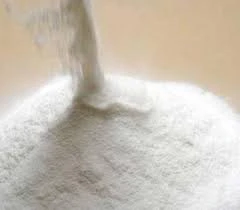
Dec . 03, 2024 19:39 Back to list
Hydroxypropyl Methyl Cellulose Safety Data Sheet Overview and Usage Guidelines
Safety and Handling of Hydroxypropyl Methyl Cellulose An Overview
Introduction
Hydroxypropyl methyl cellulose (HPMC) is a versatile water-soluble polymer widely used in various industries, including pharmaceuticals, food, cosmetics, and construction. As with any chemical substance, it is essential to understand its safety and handling guidelines, which can typically be found in a Material Safety Data Sheet (MSDS). This article aims to provide an overview of HPMC, focusing on its properties, safety considerations, and handling procedures.
Properties of Hydroxypropyl Methyl Cellulose
HPMC is a cellulose ether derived from natural cellulose through a series of chemical modifications. It exhibits excellent film-forming, thickening, and emulsifying properties, making it a popular ingredient in formulations that require controlled viscosity and stability. Its solubility in water allows it to form gels, making it invaluable in applications ranging from drug delivery systems to food thickeners.
The chemical structure of HPMC consists of hydroxyl and methoxy groups, which contribute to its unique properties. Depending on the ratio of hydroxypropyl to methoxy groups, HPMC can exhibit varied viscosity levels and solubility characteristics, allowing formulators to fine-tune their products to meet specific requirements.
Safety Considerations
When working with HPMC, it is crucial to consider the potential hazards associated with its use. The MSDS provides comprehensive information on handling, toxicity, and emergency measures.
1. Toxicity HPMC is generally regarded as safe for most applications, especially in food and pharmaceuticals. However, prolonged or high-level exposure can lead to respiratory tract irritation. It is important to minimize inhalation of dust during handling and ensure adequate ventilation in workspaces.
2. Protective Equipment Appropriate personal protective equipment (PPE) should be worn when handling HPMC. This includes safety goggles, gloves, and dust masks or respirators, particularly when the material is in powdered form.
3. Environmental Impact HPMC is not classified as hazardous to the environment. However, it should be disposed of following local environmental regulations to prevent any unintended effects on ecosystems.
Handling and Storage
hydroxypropyl methyl cellulose msds

Proper handling and storage practices are vital to ensure safety and maintain the integrity of HPMC
1. Storage Conditions HPMC should be stored in a cool, dry place, away from direct sunlight and moisture. The recommended storage temperature is usually below 30°C. Ensure that containers are tightly sealed to prevent contamination and moisture uptake.
2. Avoiding Contamination Use clean, dry utensils for measuring and handling HPMC to prevent contamination with other substances. Cross-contamination can alter the properties of HPMC, affecting its performance in formulations.
3. Spill Management In case of a spill, it is essential to act quickly. Use appropriate absorbent materials to contain the spill and clean it up following your organization's procedures. Dispose of the waste in accordance with local regulations.
Emergency Procedures
While HPMC is considered safe, it is essential to be prepared for potential emergencies
1. Inhalation If exposed to high concentrations of HPMC dust, move the affected individual to an area with fresh air. If symptoms persist, seek medical attention.
2. Skin Contact In case of skin exposure, wash the affected area thoroughly with soap and water. If irritation develops, consult a physician.
3. Eye Contact Rinse eyes immediately with plenty of water for at least 15 minutes. If irritation continues, seek medical attention.
Conclusion
Hydroxypropyl methyl cellulose is a widely utilized compound with numerous applications across different industries. Understanding its properties, safety protocols, and handling practices is essential for ensuring the safety of those who work with it and for maintaining the effectiveness of the final products. Adhering to the guidelines provided in the MSDS is critical in mitigating risks associated with exposure to HPMC while capitalizing on its beneficial properties in various formulations.
-
Versatile Hpmc Uses in Different Industries
NewsJun.19,2025
-
Redispersible Powder's Role in Enhancing Durability of Construction Products
NewsJun.19,2025
-
Hydroxyethyl Cellulose Applications Driving Green Industrial Processes
NewsJun.19,2025
-
Exploring Different Redispersible Polymer Powder
NewsJun.19,2025
-
Choosing the Right Mortar Bonding Agent
NewsJun.19,2025
-
Applications and Significance of China Hpmc in Modern Industries
NewsJun.19,2025







